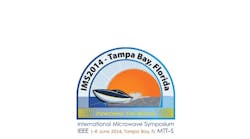Synthesizer Shuts Down Jitter To 7 GHz
Model SLC from Noise eXtended Technologies (Noise XT; IMS Booth No. 1053) is a single/dual-clock frequency synthesizer with low jitter and phase noise from 2 MHz to 7 GHz. This compact unit measures just 85 × 110 × 200 mm but can provide the clean signals to measure the latest analog and digital integrated circuits (ICs). It can serve as a test signal source or local oscillator (LO) for a variety of systems, with a phase-noise floor of -170 dBc/Hz offset 10 MHz from the carrier and 40 fs RMS jitter.
According to Guillaume de Giovanni, president, Noise XT, “The SLC is designed to provide excellent clock or LO substitution signals to semiconductors where jitter and noise really matter. Typically, the SLC will be used to drive data converters, direct digital synthesizers, or high-speed FPGAs and serial links to achieve the highest performance.” The SLC combines multiple direct-digital synthesizers (DDSs) and a phase-locked loop (PLL) to achieve the outstanding stability and low-noise performance.
